On the Road is a weekday feature spotlighting reader photo submissions.
From the exotic to the familiar, whether you’re traveling or in your own backyard, we would love to see the world through your eyes.
It’s Albatrossity Monday, but not the usual! Buffalos and birds and spiders, oh my! Then Wag takes us to Chicago, CaseyL takes us on a 2-day trip to Washington, and we close out the week with haikus from Munira.
Albatrossity
The day after we arrived at Buffalo Camp we spent the morning wandering in the general area around the campsite, which included a lot of prairie as well as a creek with some trees and shrubs. Prairie birds were expected, but I was sort of surprised to see a fair contingent of birds that I did not know made it this far north and west (48N, 108W), But we were still east of the Rockies, so we had some eastern birds as well as some cool western prairie birds. So here are some of those. WARNING to those who do not appreciate spiders: The last picture in today’s batch is an impressive spider. Don’t be alarmed, it is only a picture. But I do understand that some folks are arachnophobic, so I’ve included a warning right up here at the top. It’s a really cool spider…
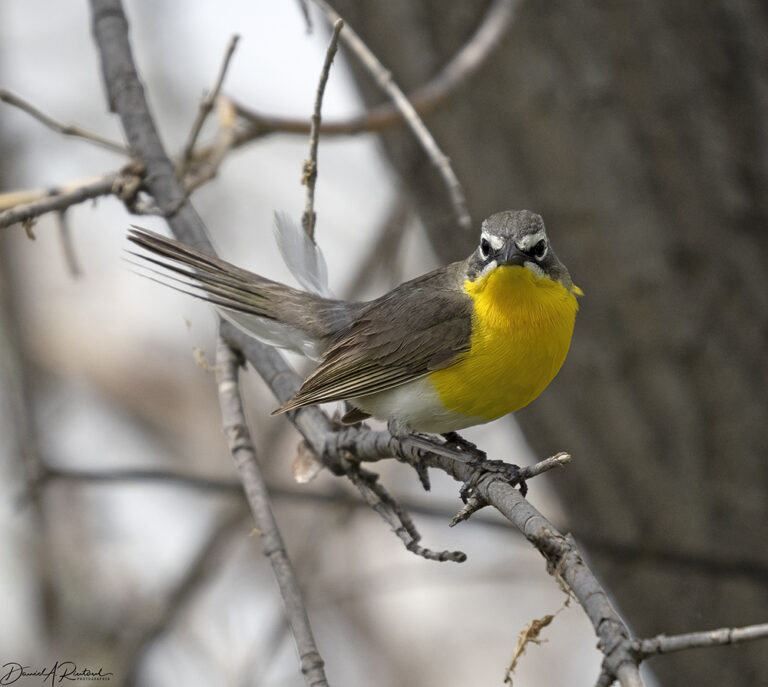
One of the surprising birds was this Yellow-breasted Chat (Icteria virens). A look at the range map would have told me that this was not surprising, as they are found all across the continent, Maine to California and Canada to Mexico. But somehow, I have always associated them with the eastern avifauna. This species was once considered to be a member of the warbler family (Parulidae), but recent studies resulted in it being awarded its own family (Icteriidae). Large, noisy, and large-billed, they can be easy to hear and hard to see. This one came out to see me quite readily; I suspect it doesn’t get a lot of human company up there.
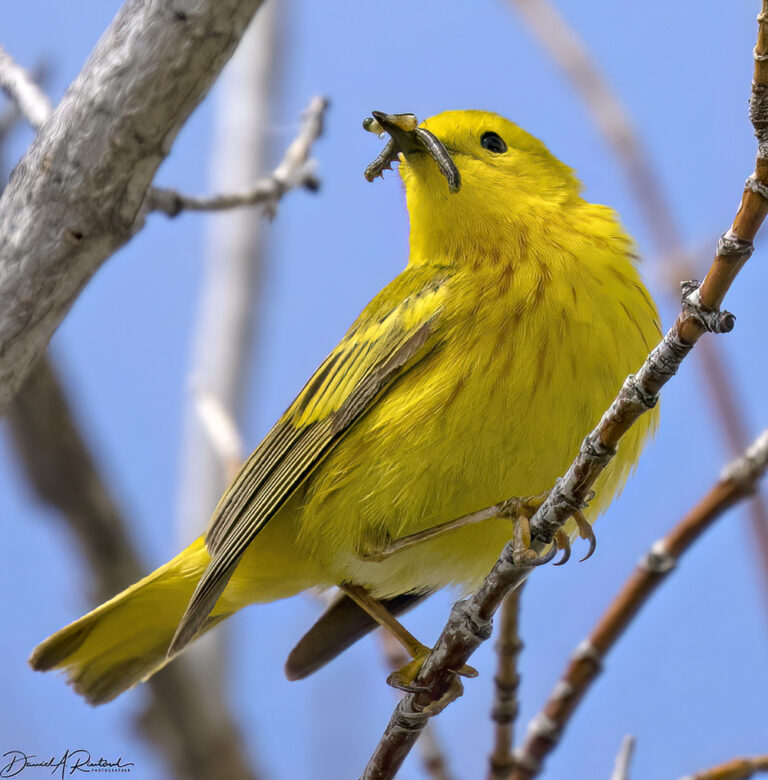
Yellow Warblers (Setophaga petechia) are also found as summertime birds across the northern ¾ of the continent, including Newfoundland and Alaska, so this guy was less of a surprise. He was busily feeding his family, but did take a few seconds to pose for a picture.
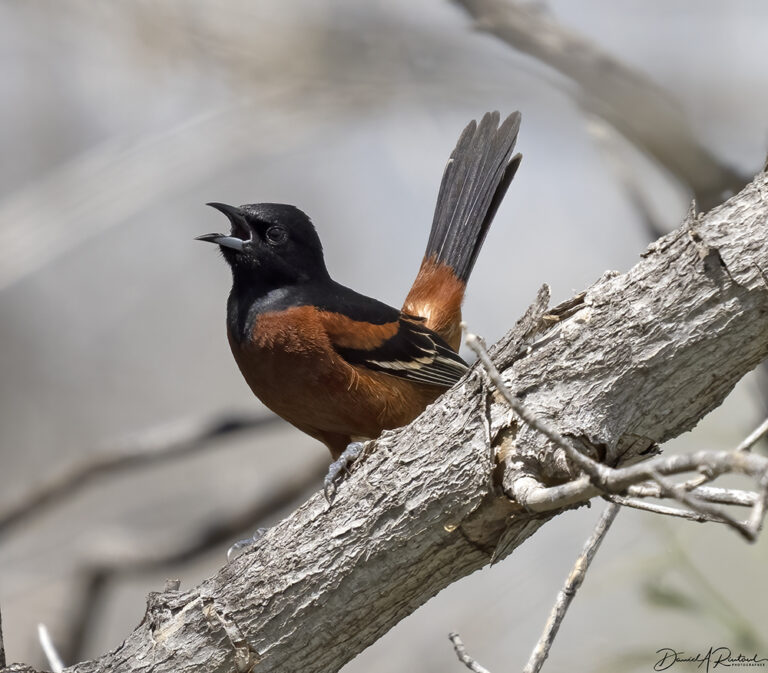
Orchard Orioles (Icterus spurius), however, are definitely birds that do not summer in the western third of most of North America. A look at the range map for this species says that our campsite was pretty close to the northern and western limits of its summer range. This is a gorgeous bird, and one that my west coast birding friends always want to see if they visit Flyover Country.
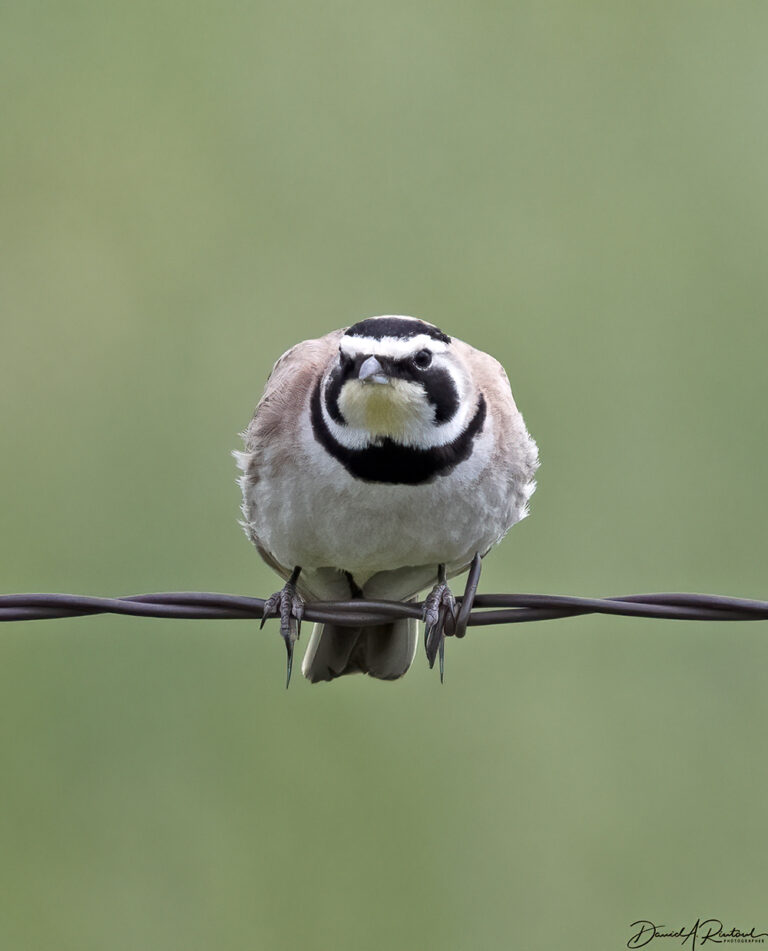
Birds of ranch country have a fondness for perching on barbed wire. This is a two-edged sword for the photographers, who would appreciate a more photogenic perch, but who also appreciate birds who perch away from trees and leaves. So the next few images feature barbed wire perches, as well as birds like this Horned Lark (Eremophila alpestris). We saw plenty of these guys; thankfully not all of them were as grumpy as this one.
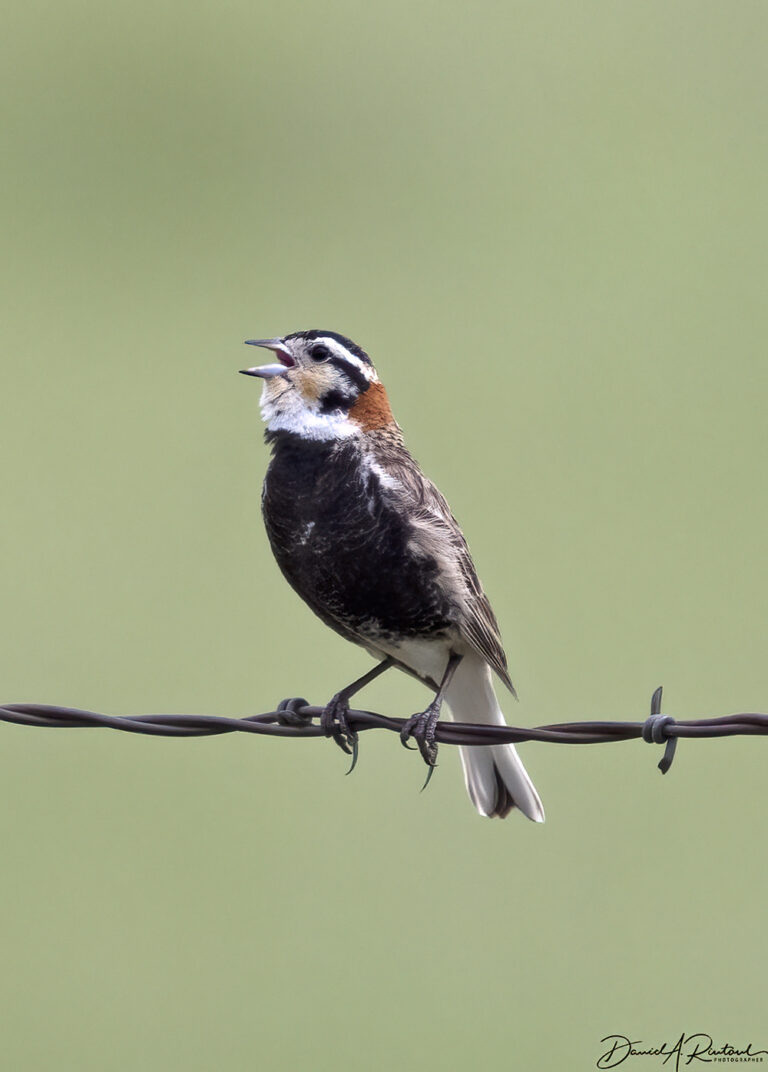
These northern grasslands also are a summer home to longspurs. One of those is the aptly-named Chestnut-collared Longspur (Calcarius ornatus). This visually striking bird also has a delightfully sweet song that sounds a lot like the Western Meadowlark, which was also abundant and quite vocal here.
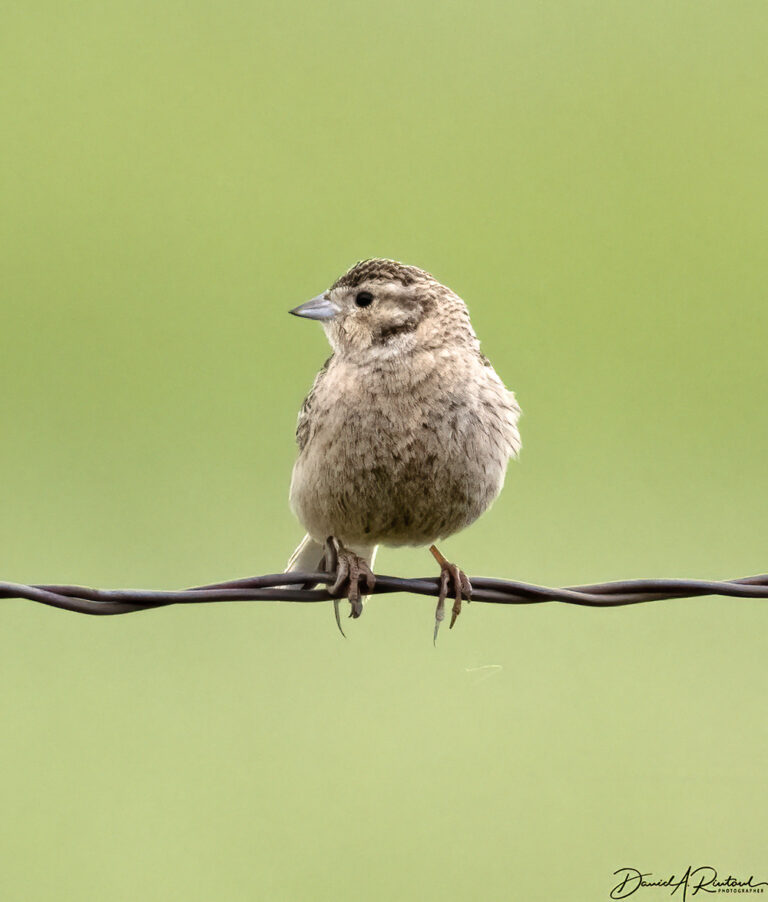
The female Chestnut-collared Longspur, per usual, is a lot more subdued, plumage-wise. But fond of barbed wire perching nonetheless.
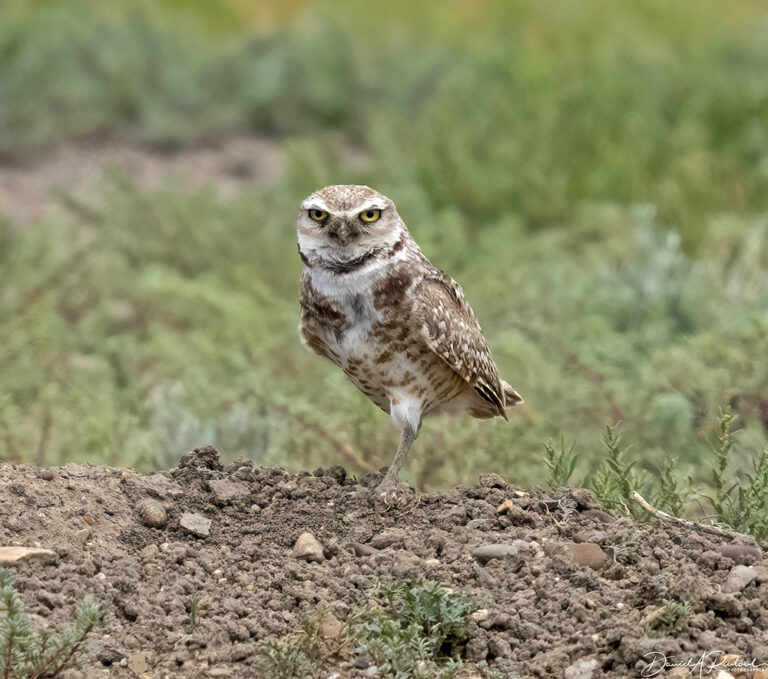
Prairie dog towns were a common sight in this part of Montana, and wherever there are prairie dogs, you have to look for Burrowing Owls (Athene cunicularia). We were not disappointed in that search, we saw many of these comically fierce owls in our few days there. This unique American owl can be found from Alberta to Patagonia, but the prairie dog towns of the western US remain one of its strongholds.
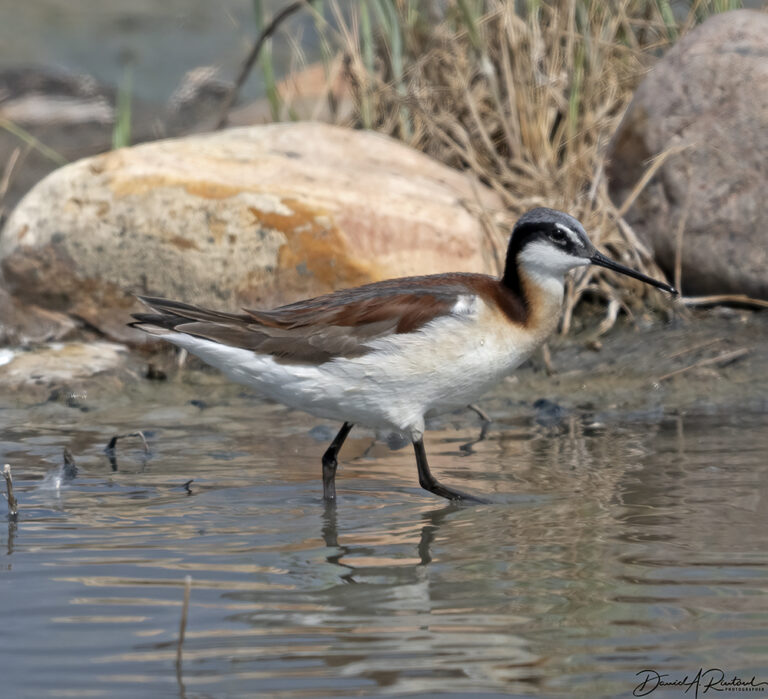
Although there are some marshes and wetlands in this part of Montana, it is generally a pretty dry place. So it was good to find a small wetland that hosted some ducks and some shorebird, including this Wilson’s Phalarope (Phalaropus tricolor). Since the other two phalarope species are generally restricted to the Arctic during the summer, and move along the coasts during migration, Flyover Country denizens appreciate having this landlubber of the phalarope family here for the summers.
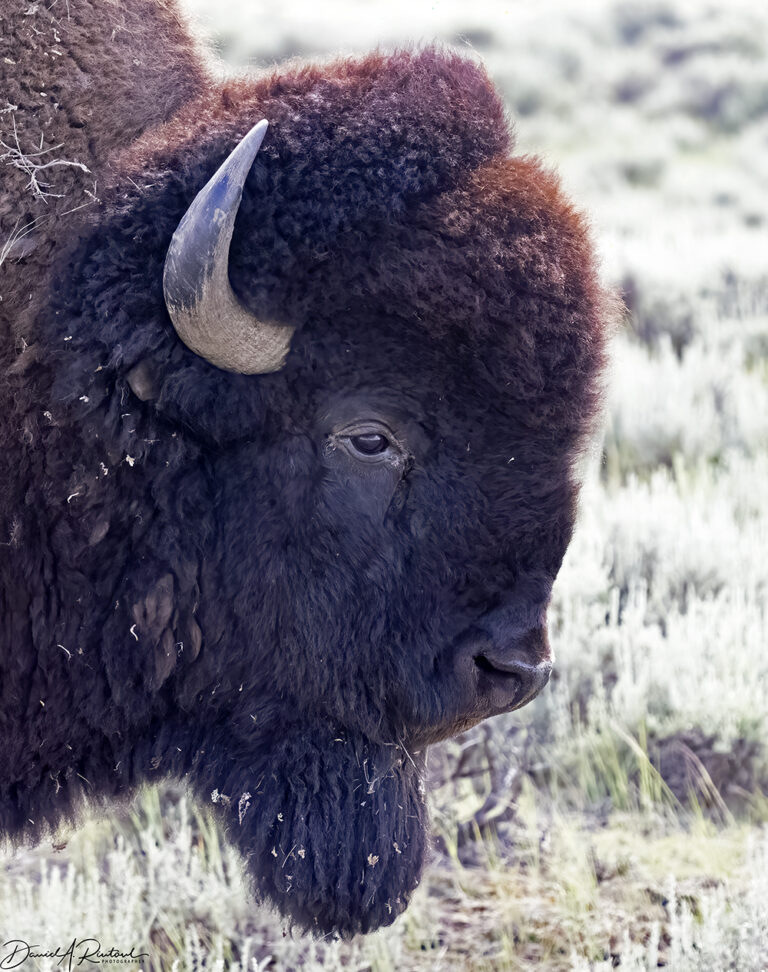
Posing like it wants to be on the next US nickel, this spectacular American Bison (Bison bison) was one of three bulls in a small group that we saw in the Charles Russell National Wildlife Refuge. There are several bison herds in this part of Montana (much to the chagrin of some of the cattle ranchers), and it was good to see this iconic creature back in some of its historic northern range. There was also a buffalo jump site nearby, where ancient Americans hunted these creatures without the benefit of horses or firearms.
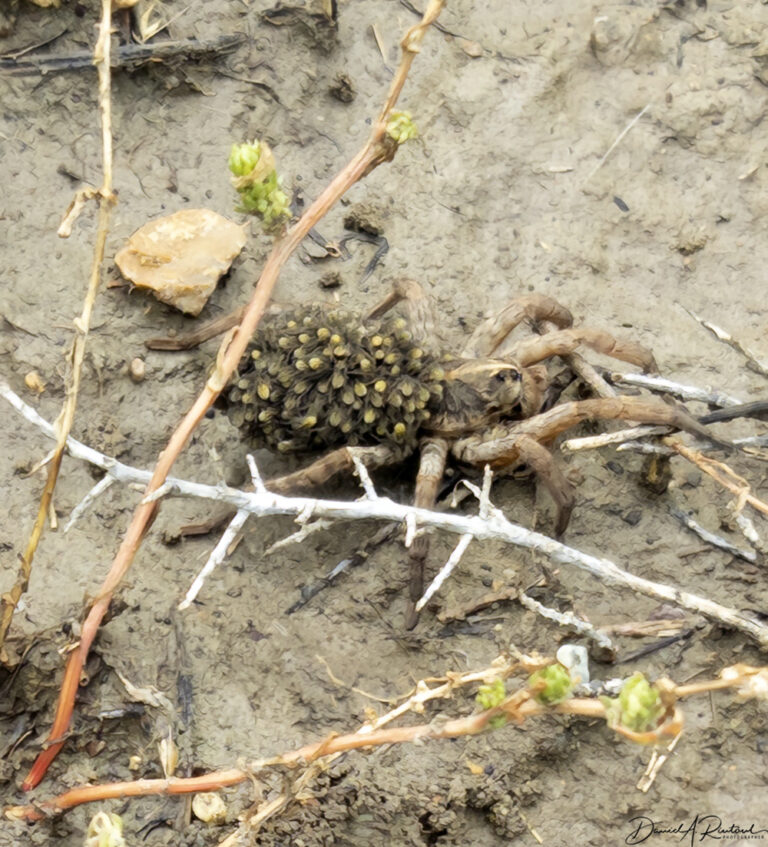
Okay, it’s spider(s) time. A Wolf Spider female carting her baby spiderlings around on her back. This critter was large enough for my daughter to spot it on the “road” as we bumped along in her giant pickup truck looking for birds and prairie dogs. I would guesstimate that it was 2-2/5” from stem to stern. And she was a good mom; those babies hung on as she vanished into the grasses away from the road.

Wanderer
That’s quite a spider. Photos are, as always, beautiful.
OzarkHillbilly
That male larkspur is one gorgeous bird.
I love Wolf spiders. One time I spotted a big ‘un on my front porch, but she looked a little off to me, something just not quite right. So I got down on my hands and knees to get a closer look and I did something that startled her, not sure what. All of a sudden I had 1 or 2 hundred little spiderlings running for cover in an ever widening spread.
Probably an arachnophobes worst nightmare but I just thought, “Cool….”
JPL
Your photos are always special.
Van Buren
I want to paint my kitchen the color of that Yellow Warbler. I suppose I had better ask Ms. Van Buren first.
Wag
Great bison shot.
Betty Cracker
Beautiful photos!
I fell in love with Burrowing Owls the first time I saw them on Marco Island. “Fierce” is right; they’re the size of a beer can but will confront and hiss at anyone who comes near. Florida Atlantic University has Burrowing Owls as their sports team mascot.
Barbara
Amazing photos as always. I know you probably were quite a ways away from that bison, but it’s rare to see such a detailed view of a face like that.
Rob
It blows my mind that spider exhibit maternal behavior like that in the photograph.
I had slept fairly well last night, so I’m feeling more like the Orchard Oriole and less like the Horned Lark (or the Yellow-breasted Chat).
Argiope
@OzarkHillbilly: I hope all those babies found mama again. I’m a fan of wolf spiders and especially orb weavers, as my nym suggests….outside. When indoors, the bigger ones require relocation. Once upon a time we lived in rural southeastern Kentucky, where the wolf spiders can get truly enormous. I recall Mr. Argiope giving our spawn a bath one afternoon. I walked in to say hello and immediately saw an impressive one hanging out unnoticed (by him) on the side of the tub. It must have crawled out through some nearby ductwork. Arrangements were made involving a large-mouth rocks glass and a file folder, and human personnel shifted….expeditiously. She had to pull in her legs to fit inside the glass. Now THAT was a spider. Definitely needed her own room: the great outdoors.
Elma
The recording of the Chestnut-Collared Longspur song made my cat leave her sunny window sill to come and investigate. Thanks for including it.
JeanneT
I’ll have to show this batch to my 3yr old grandkid. He’ll love these photos, especially the owl and the spider.
Anyway
Wow! Excellent set. Thanks.
The Golux
Albatrossity, I went to Google Maps to look up Buffalo Camp and saw that you had posted some pictures there, including the Yellow Warbler.
Great shots as always.
Albatrossity
@The Golux: Yeah, I don’t usually bother to post Google Map “reviews” of places that I visit, but that place was pretty special, and probably doesn’t get a lot of reviews!
Chat Noir
Your pictures are extraordinary as usual!
SteveinPHX
Thanks! Yellow Warbler brings back memories of early birding and what a thrill it was to see this bird for the 1st time!
zhena gogolia
StringOnAStick
Do Longspurs get their name from how long their rear talon is? They look remarkably long in these photos, though maybe it’s the small diameter of what they are perching on.
Lovely photos as always
Yesterday I was standing in the path next to the garden and had two hummingbirds do battle at knee level, about 4′ away; always amazing to see and that close was a treat.
Albatrossity
@StringOnAStick:
Yes, that claw on their hind toe is the source of their name.
dnfree
My husband was bitten once by a wolf spider in Northern Wisconsin, in a guest bathroom that was rarely used. It apparently emerged from the plumbing unbeknownst to him. They JUMP. And the bite (on a toe) was painful for days. He did see a doctor when we got home.
J R in WV
@StringOnAStick:
Some years ago I was sitting on the back porch reading in a shady spot, when two hummers came around the corner of the house at full speed, one chasing the other, two males each wanting all the nectar for themselves…
They went on either side of my head, barely an inch from my face, the wind from their wings blowing my hair — was scary afterwards, no time for fear before they were long past me. Google tells me 30 mph is their maximum speed on the level, seemed much faster close up!
Yes, we have feeders out for the hummers, not too many blooms in the local forest floor.
BigJimSlade
wow.
Albatrossity
@J R in WV: Hummers also have very good brakes; they can be barreling along at full speed toward a mistnet, and if they spot it, they can slam on the brakes quickly enough to stop right in front of it…
J R in WV
@Albatrossity:
That would be awesome to see, they are so fast and agile, fighting each other for access to one of the 12 feeding stations when only 3 birbs are wanting to drink nectar… So violent seeming! Sure woke me up when they shot past my ears!
Some years ago I heard a big slam followed by shattered glass noises, and walked around the whole house looking for the broken window — no dice from inside! The next day walking around outside to do something, the outer pane of one of the big double sided glass Andersen windows was gone, lying in shards on the ground.
I decided it was probably a turkey at full speed into the window, shattered the outer pane, woke up later on and staggered away, no signs of blood or feathers, so probably no serious damage to the bird. Birbs are strange, we do have lots of turkeys…